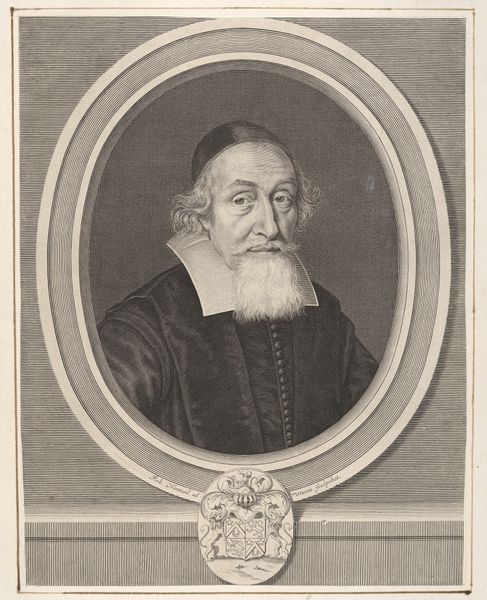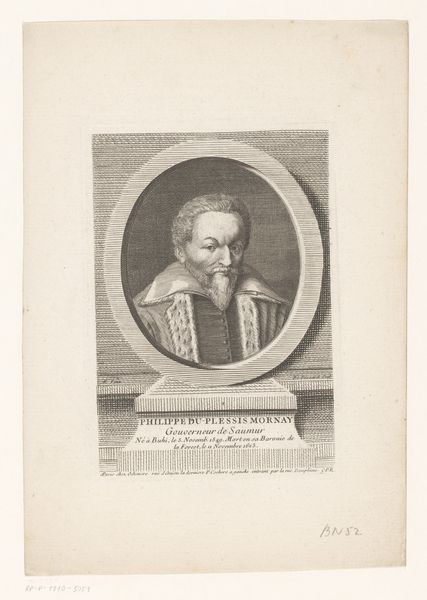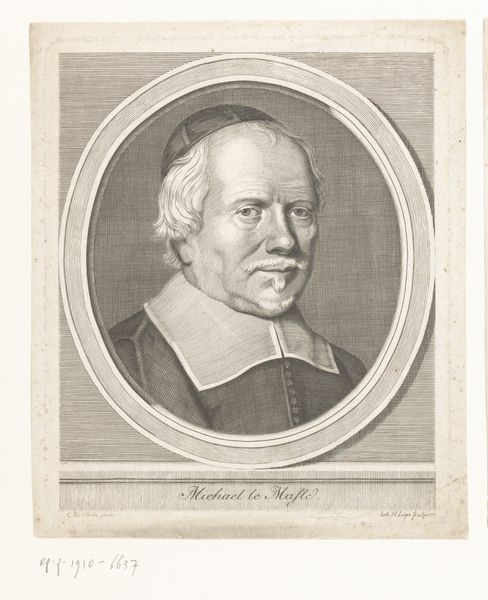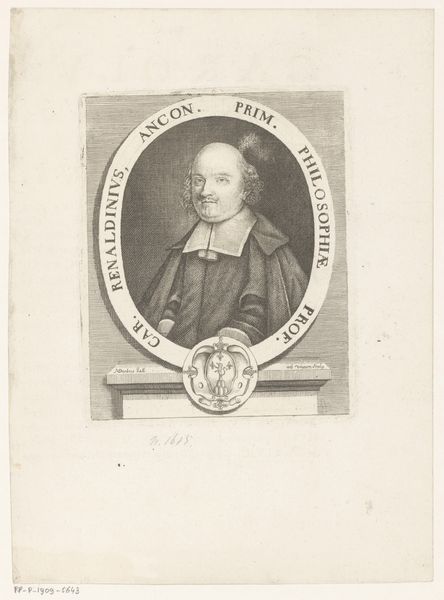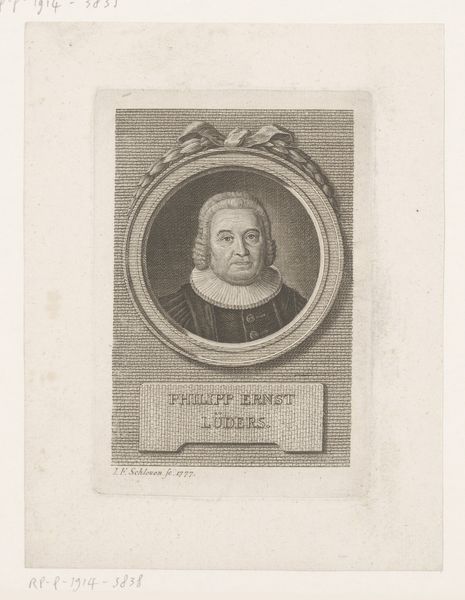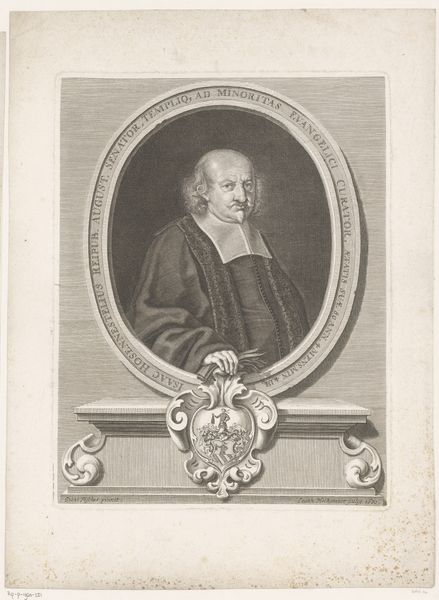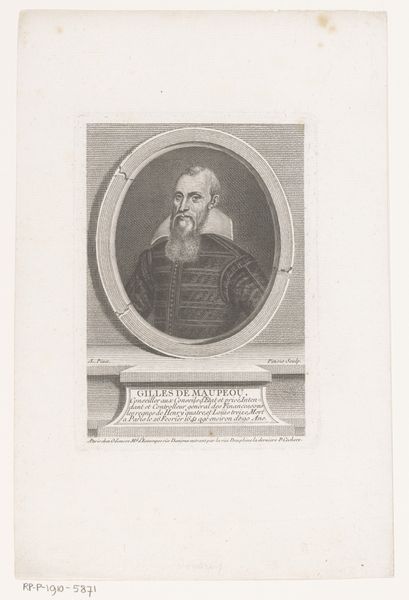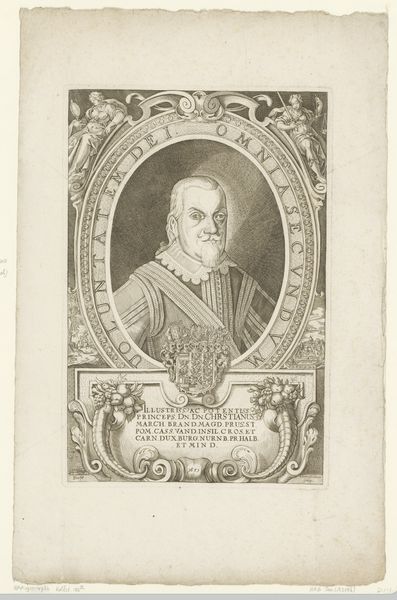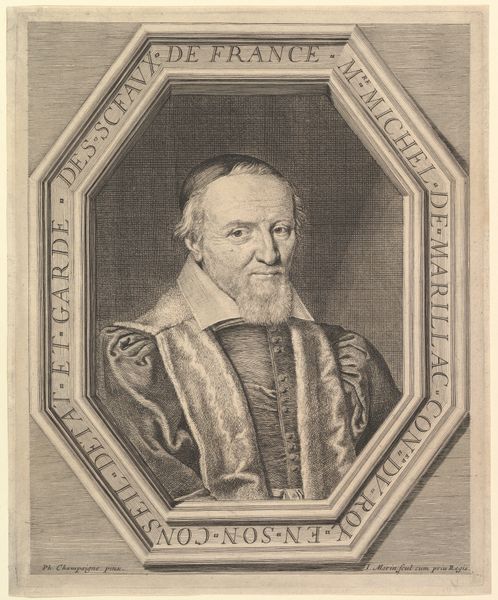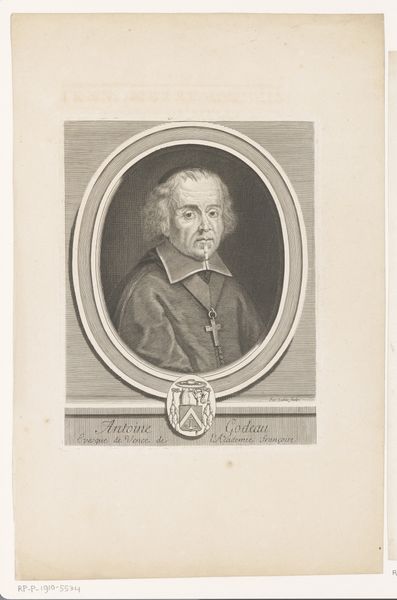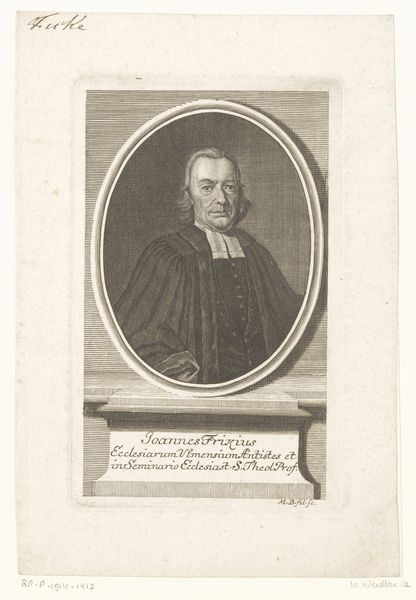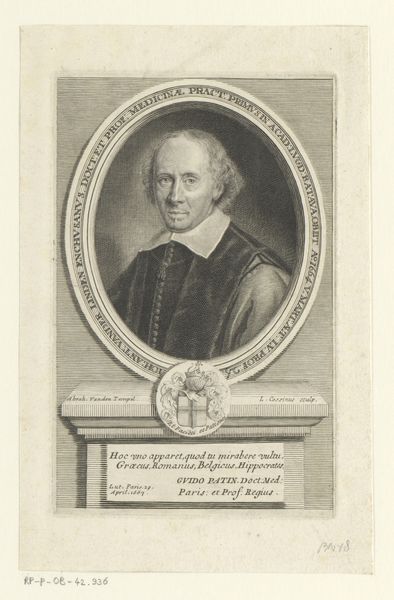
print, paper, engraving
#
portrait
#
baroque
# print
#
paper
#
engraving
Dimensions: height 296 mm, width 214 mm, height 171 mm, width 134 mm
Copyright: Rijks Museum: Open Domain
Curator: This is a later impression of Jean Morin's engraving, "Portret van Michel de Marillac," created sometime between 1630 and 1790. The work, rendered on paper, resides here at the Rijksmuseum. Editor: There’s a severe gravity in this portrait; the tightly framed oval and the subject’s direct gaze feel quite intense. Curator: Precisely. Observe how Morin masterfully uses line and texture in this print. Note the meticulous cross-hatching that defines the sitter’s face and vestments, creating a depth and dimension absent in lesser works. The precision indicates technical virtuosity, in line with the demands of Baroque portraiture. Editor: Indeed. The subject, Michel de Marillac, looks every bit the "Garde des Sceaux"—Keeper of the Seals—as the inscription declares. That severe gaze, framed by his beard and the sharp angles of his collar, communicates the unwavering authority associated with his position and piety. He seems to be a stoic presence amid turmoil. Curator: An acute reading! Beyond pure aesthetics, this print presents a fascinating study in form. The oval frame in contrast with the rectangular architecture behind it provides structural balance and is a stylistic gesture common in baroque era portraiture. This interplay invites closer inspection of representational modes of the era. Editor: Right; these visual cues extend deeper—he embodies a fusion of religious authority signified by his attire and worldly power denoted by his stern countenance. It mirrors France’s grappling with religious and political conflict during the early 17th century. Curator: To look closer, consider the print’s lines as pure forms: Morin's rendering pushes engraving to imitate painted portraits while maintaining a certain visual autonomy typical of reproductive printmaking of the time. Editor: Absolutely; revisiting this image reminds us how symbols evolve through time and how powerful gazes cement legacy. The gravity Morin captures in his engraving is as affecting now as I imagine it was then. Curator: Ultimately, by closely dissecting visual components of works such as this, one is presented with an intimate visual essay on the complex socio-political landscape from whence they came.
Comments
No comments
Be the first to comment and join the conversation on the ultimate creative platform.
